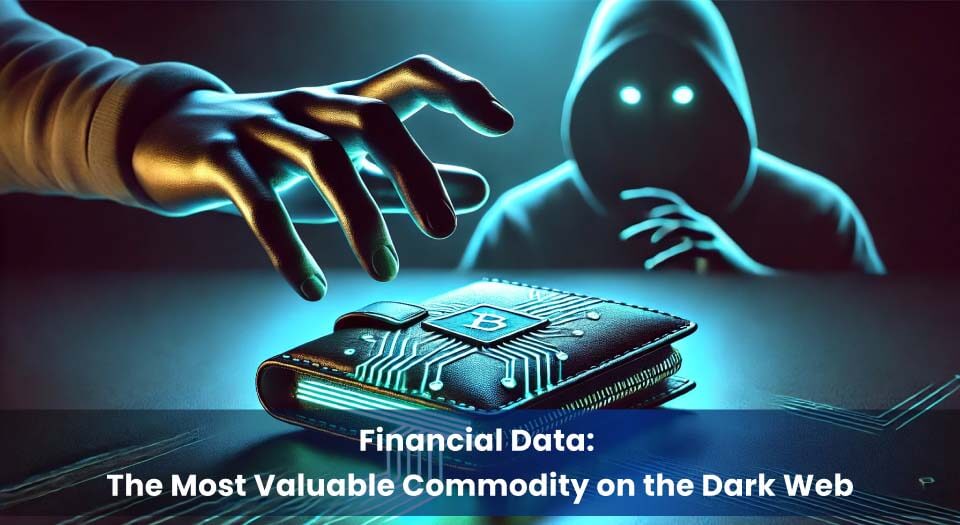
The Hidden Marketplace for Stolen Data
The dark web is an unregulated part of the internet where cybercriminals trade stolen data anonymously. For businesses, the dark web poses a significant cybersecurity risk, as sensitive information such as financial details, personal records, and login credentials are frequently bought and sold.
According to Threat Intelligence Lab, cybercriminals profit from selling stolen data, which is often obtained through data breaches, phishing attacks, or malware infections.
This article explores the top types of data sold on dark web marketplaces, why it matters to businesses, and how you can protect your organisation from becoming a target.
⚠️ Key Fact: Cybercriminals often bundle stolen data for sale in bulk, making it more accessible for malicious activities like identity theft and fraud.
Why Data is Bought and Sold on the Dark Web
Stolen data is a valuable commodity on the dark web due to its numerous uses in fraudulent activities, including:
- Identity Theft: Using personal details to impersonate individuals.
- Financial Fraud: Accessing credit cards, bank accounts, or cryptocurrency wallets.
- Credential Stuffing: Using exposed credentials (e.g., emails and passwords) to breach accounts.
- Corporate Espionage: Selling intellectual property or trade secrets to competitors.
| Type of Data | Monetisation Method |
|---|---|
| Financial Information | Used for fraudulent purchases and scams |
| Personal Identifiable Info | Identity theft and fake IDs |
| Exposed Credentials | Credential stuffing and account breaches |
| Healthcare Data | Insurance fraud and blackmail |
The anonymous nature of the dark web makes it easier for cybercriminals to buy, sell, and trade this data without detection. Businesses need to stay vigilant as they often become indirect victims when employee or customer data is leaked.
Top Types of Data Sold on the Dark Web

1. Financial Information
Financial data is one of the most valuable types of information on the dark web. Cybercriminals target:
- Credit Card Numbers: Often sold in bulk, with details like CVVs included.
- Bank Account Credentials: Used for unauthorised transfers and withdrawals.
- Cryptocurrency Wallets: Private keys for digital currencies.
Example: A single stolen credit card can sell for as little as $5 to $10, depending on the available information .
| Type of Financial Data | Average Price on Dark Web |
|---|---|
| Credit Card Numbers | $5–$10 per card |
| Bank Account Login Details | $50–$200 |
| Cryptocurrency Wallet Keys | Varies (based on funds) |
2. Exposed Credentials
Exposed credentials—combinations of usernames and passwords—are widely traded on the dark web. These are used for:
- Credential Stuffing: Hackers test stolen credentials on other accounts.
- Phishing Attacks: Cybercriminals access email accounts to spread phishing campaigns.
Case Example: Large-scale breaches like the LinkedIn and Apollo.io incidents have exposed millions of credentials, many of which ended up on the dark web (IBM Data Breach Report).
3. Personal Identifiable Information (PII)
PII includes data such as:
- Full names, dates of birth, and addresses.
- Social security numbers or tax IDs.
- Phone numbers and email addresses.
Stolen PII is used for identity theft, fake loans, or creating fraudulent accounts. A full set of PII can sell for as much as $30 to $100 on the dark web.
4. Healthcare Records
Healthcare data is particularly sensitive and valuable because it includes medical histories, insurance information, and billing records. This data is exploited for:
- Insurance Fraud: Filing false insurance claims.
- Blackmail: Threatening to reveal medical information.
Why It Matters: Healthcare data breaches are among the costliest, averaging $10.93 million per incident (IBM Report).
5. Intellectual Property and Corporate Data
Businesses’ proprietary information—such as trade secrets, R&D data, or confidential communications—is highly sought after. Competitors or malicious actors may purchase this data for corporate espionage or sabotage.
⚠️ Key Fact: A single compromised email account can expose sensitive business communications.
Why Your Business Should Be Concerned
The sale of sensitive data on the dark web can have severe consequences for businesses, including:
- Financial Losses: Fraud, ransomware payments, or lawsuits.
- Reputational Damage: Losing customer trust after a breach.
- Regulatory Fines: Violations of GDPR or other data privacy laws.
For businesses, the risk is not limited to their systems. If employee credentials are compromised, attackers can infiltrate networks, spread malware, or exfiltrate sensitive company data.
How to Detect and Protect Against Dark Web Data Leaks

Here are key steps businesses can take to monitor and prevent dark web threats:
- Implement Dark Web Monitoring Tools: Solutions like Cybernod’s Dark Web Monitoring actively scan for exposed credentials and leaked data.
- Enforce Multi-Factor Authentication (MFA): Adding layers of security to accounts reduces the risk of unauthorised access.
- Conduct Regular Security Assessments: Use tools like MDR (Managed Detection and Response) to identify vulnerabilities.
- Train Employees on Cyber Hygiene: Educate staff to use strong, unique passwords and avoid phishing attempts.
- Respond to Alerts Immediately: When dark web threats are detected, act quickly to secure systems and reset compromised credentials.
🔐 Protect Your Business Now: Cybernod’s Dark Web Monitoring Solution identifies stolen data before it’s exploited
Stay Ahead of Cybercriminals
The dark web continues to be a thriving marketplace for stolen data, posing a significant risk to businesses of all sizes. From exposed credentials to financial and healthcare data, understanding what is traded on the dark web is essential for proactive cybersecurity.
With Cybernod’s Dark Web Monitoring, businesses can:
✅ Identify leaked credentials in real time.
✅ Prevent costly breaches before they escalate.
✅ Safeguard their reputation and compliance.
Take action today. Don’t wait for a breach—protect your business with Cybernod’s expert solutions.
Categorized in:
Comments